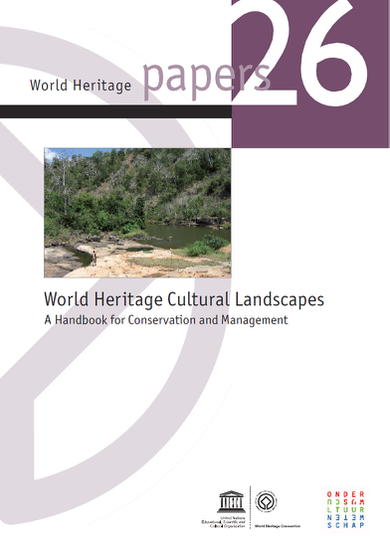Cultural landscapes are those where human interaction with natural systems has, over a long period, formed a distinctive landscape. These interactions arise from, and cause, cultural values to develop.
Managing these values, with their material, physical evidence and their non-material associations, so that they remain of outstanding universal value, is a particular challenge for World Heritage cultural landscape managers. Today, sixty-six cultural landscapes have been inscribed on the World Heritage List. This book presents ideas that should be considered and issues that should be addressed. To reinforce this information it offers policies and case studies from different parts of the world. The Netherlands Funds-in-Trust provided support for its publication.











